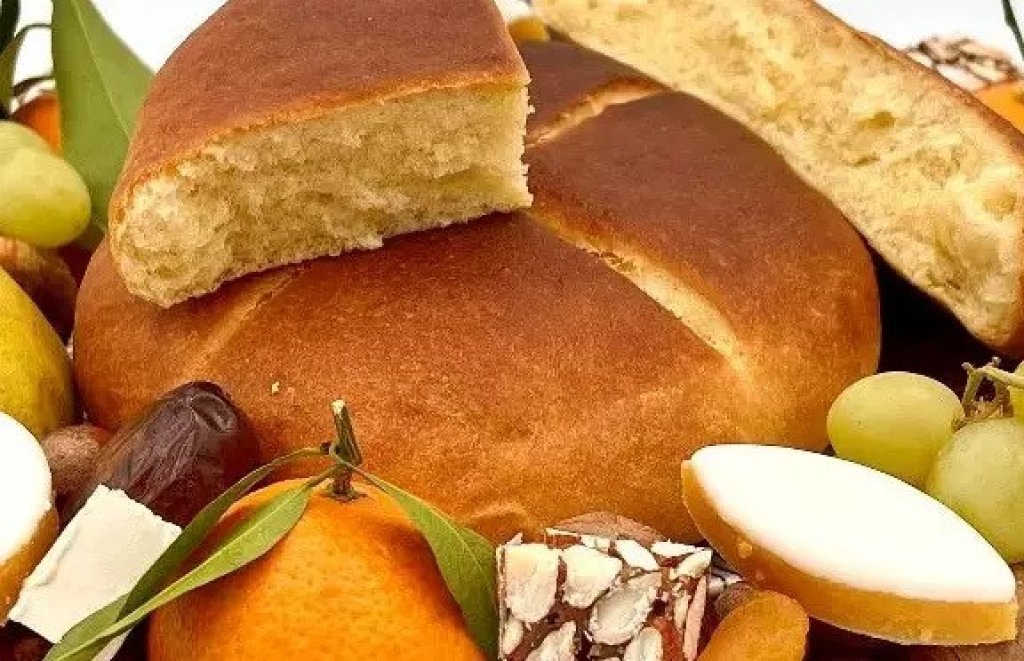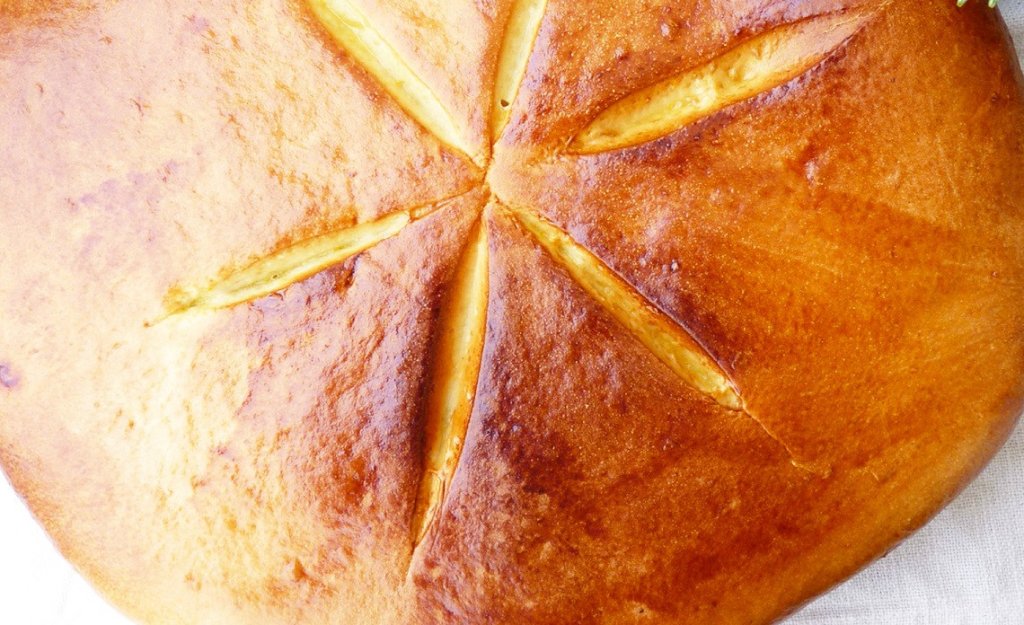The “pompe à huile” is the iconic dessert of Christmas celebrations in Provence. This sweet fougasse is one of the thirteen traditional desserts served on Christmas Eve in Provence.

Its simple recipe combines flour, olive oil, sugar, and orange blossom water to create a fragrant brioche that can be shared with the whole family.
The name comes from the old oil mills where flour was used to collect the olive oil residue at the bottom of the vats. Today, this tradition continues throughout Provence.

Preparation takes about 4 hours, including the time for the dough to rest. The yeast is dissolved in warm water, then the flour, olive oil, and orange zest are gradually added.
After kneading, the dough must rest for 2 hours and then be shaped into a flatbread. Traditionally, 5 or 7 cuts are made on the surface before baking in the oven at 350°F for 20 minutes. Once out of the oven, it is brushed with olive oil to give it its authentic taste.
Ingredients for 2 pompes (8 to 10 servings)
Here is the list of ingredients with the exact weights to make your traditional pompe à l'huile:
For the dough
500 g T65 or T55 flour
125 ml extra virgin olive oil
70 g powdered sugar
30 g fresh baker's yeast
145 ml lukewarm water
3 tablespoons orange blossom water
8 g fine salt
For the finish
Olive oil for brushing
Organic orange zest (optional)

Step-by-step recipe
Step 1: Prepare the starter
Crumble the fresh yeast into a bowl with 145 ml of lukewarm water (not hot, so as not to kill the yeast).
Add 240 g of flour and mix until you obtain a smooth ball of dough.
Place this ball in a bowl filled with lukewarm water.
Wait for the starter to rise to the surface (a few minutes), then leave it to rest for 8 minutes.
Step 2: Prepare the main dough
Meanwhile, in a stand mixer, beat the remaining 260 g of flour with the sugar, salt, and orange blossom water.
Gradually pour in the olive oil, mixing at low speed.
Step 3: Combine the doughs
When the sourdough starter has been floating on the surface for 8 minutes, carefully pick it up with both hands and add it to the rest of the dough.
Knead in the mixer until you obtain a smooth, shiny dough that does not stick to your fingers.
Step 4: Shape the buns
Divide the dough into two equal parts.
On a floured work surface, shape two oval buns about 2 cm thick.
Make 7 cuts with a round-tipped knife. Spread the cuts apart to prevent them from closing up.
Step 5: Second rise
Place the rolls on a baking sheet lined with parchment paper.
Cover with a clean cloth and let rise for about 4 hours in a warm place. The rolls should be puffed up.
Step 6: Baking
Preheat the oven to 350°F.
Bake for 12 to 15 minutes until golden brown.
Step 7: Finishing
Immediately after removing from the oven, brush the bread rolls with olive oil.
Leave to cool completely on a wire rack before serving.
Tip: The bread roll should not be cut with a knife, but broken by hand, as Jesus broke bread with his apostles.
Final tips for making pompe à l'huile
How to bake pompe à l'huile successfully
Baking pompe à l'huile requires precision to achieve the perfect texture. Start by leaving your dough to rise for at least 4 hours in a warm place. This step is crucial for developing the flavors of your recipe.
Then preheat your oven to 350°F, the ideal temperature for this Provençal pastry. Baking time varies between 12 and 15 minutes depending on your oven. Keep an eye on the color: your pompe should turn a beautiful golden brown.
After baking, let it rest for a few minutes before brushing with olive oil. This final step gives it its characteristic shine and enhances the authentic flavor of this traditional dessert.
How to store pompe à l'huile?
To store your pompe à l'huile properly, there are a few simple rules to follow after preparation. Once cooled, this traditional recipe can be stored at room temperature for up to 3 days. Wrap it in a clean cloth to preserve its soft and fresh texture.
If you want to keep it longer, place it in the refrigerator in an airtight container. It will then keep for about a week. Avoid storing it in a damp place, which will alter its crispy crust.
To restore its original freshness, reheat it for a few minutes in the oven at 150°C. This Provençal dessert will retain all its flavor and can even be prepared the day before for your holiday meals, especially at Christmas.
We hope you enjoy it. We hope you find our recipe and tips useful!
Discover all our Provençal recipes :













